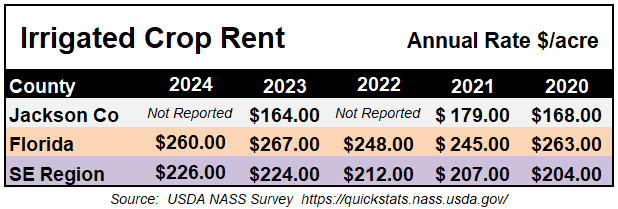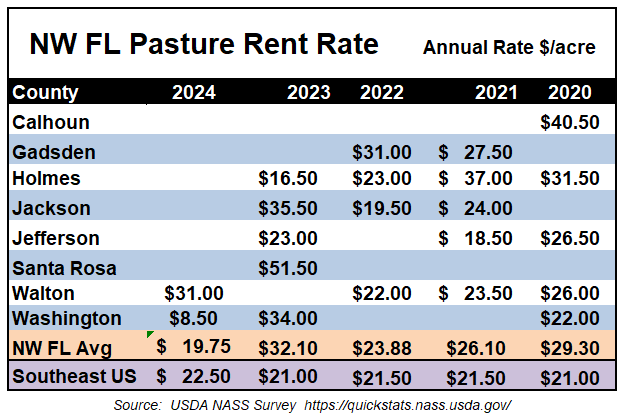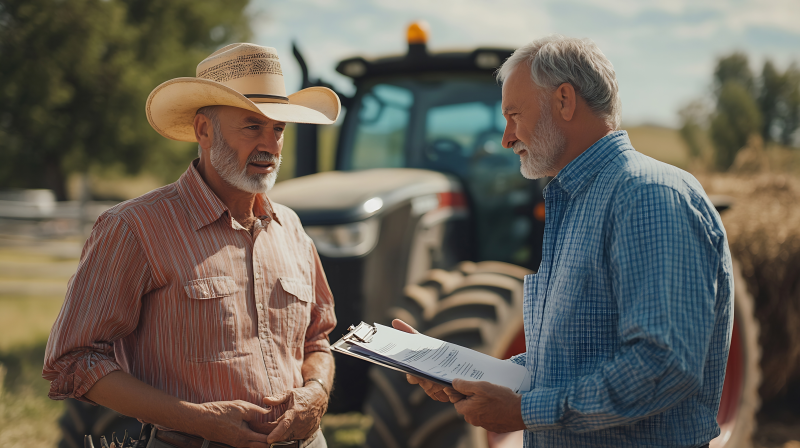
Knowing USDA’s reported average farmland rental rates or farm worker wages are a good place to start negotiations with landowners or employees. Credit: AdobeStock 974676402
Discussions about money can be awkward in almost every type of relationship, but even more so between landowners and farmers, or employers and workers. As we prepare for 2025, many farmers and landowners have begun discussions about farmland lease agreements. It is also a good time of the year to think about worker wages and benefits. One source of information available to help answer the question of how much to pay or charge is USDA’s reported averages for the previous year. Just knowing the average is only part of the story, but at least it offers an unbiased reference point for both parties to start those awkward conversations.
–
Farmland Rental Rates
The USDA’s National Agricultural Statistic Service (NASS) annually surveys farm owners/managers to provide average land rental rates. Unfortunately their survey summary does not offer the range of rates paid, but does offer county, state, and regional averages.
The following is a summary of the information NASS provided for Northwest Florida from 2024 surveys. The rates reported were the annual rate per acre, so these are not monthly rates. Table 1 provides the average rate per acre for renting non-irrigated, dryland, or rain-fed crop land by county. The average rental rates in 2024 ranged from $34.50/acre to $106/acre, with an average of $56.19 for the eight Panhandle Counties in the NASS report. For the Southeastern sates, the average dryland crop rental rate was $66/acre.
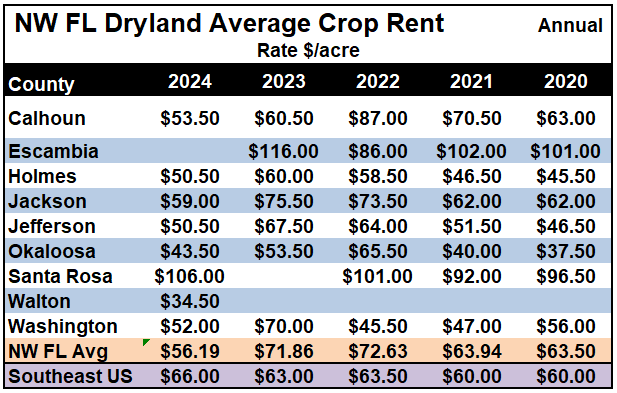
Table 1. Non-irrigated average farmland rental rates. Source USDA NASS Annual Survey https://quickstats.nass.usda.gov/
–
Average irrigated farmland rates were not reported specifically from any of the Panhandle Counties in 2024. There was a category called “Other Counties that may have had some data from the the Panhandle that was reported at $212/acre. The only county data from North Florida reported specifically this year was from Suwannee County – $173/acre and Madison County – $278/acre. The average rate reported for the entire state of Florida was $260/acre, and from the Southeast Region (Alabama, Georgia, South Carolina, & Florida) was $226/acre. There is just not much data to work from here, so my suggestion would be to use the Southeast average as a guide. Part of the reason there is such variation here is based on the value of the crop being irrigated.
Pasture rent data was also limited from Panhandle Counties. The $8.50/a rate reported from Washington County is clearly an outlier, based on data from previous years. As with irrigated rates above, the Southeastern average was $22.50/a, so that is my suggestion for a starting place for negotiations.
–
Lease Agreements
If you are planning to enter an agreement on a lease, I would certainly recommend having printed lease agreement with signed copies made for both parties, especially when making agreements for multiple years. Lease agreements don’t have to be written by a lawyer or even notarized, but certainly can be to make them stronger legal documents, in case of a future dispute. The main thing that needs to be clear to both parities are the annual lease rate per acre, the number of acres being leased, and the date when payment is due annually. Typically, not every acre of the property can be farmed, so it may be that only part of the property is officially leased. UF/IFAS Extension does not have a sample template for lease agreements, but I created a basic form from a Tennessee Extension document and have found some others from other states that also provide good examples.
The other thing that is vital is to spell out expectations from both parties. Things to consider include:
Who has permission to access the property? Farmer, employees, and immediate family members, or simply associates of the lessee. Don’t forget to include landowner associates that might also be allowed access. Don’t forget to provide locks for both parties if the main entry gates are locked.
Who is responsible for maintenance? What specifically requires maintenance and how frequently?
What specific rights does the lessee (tenant) have? Is the land to be used only for commercial farming, or are recreational rights such as fishing and hunting included? The University of Tennessee has a nice publication that outlines what should be considered for farm leases: Introduction to Farmland Leasing.
The following are links to documents that might be helpful, just utilize them for what is most important to both parties and don’t over complicated the agreement.
Basic Farm Lease Agreement Form (word document to download and customize – adapted from UT Extension Farm Leasing publication)
Basic Pasture Lease Form (NC State Extension)
Ag101 Cash Farm Lease (online fillable form provided North Central Farm Management Extension Committee)
Ag 101 Pasture Lease (online fillable form provided North Central Farm Management Extension Committee)
–
Farm Worker Wages
USDA provides a Farm Labor Report twice per year in May and November. The summary statement from the November Farm Labor Report said, “U.S. farm operators paid their hired workers an average gross wage of $19.11 per hour during the October 2024 reference week, up 2 percent from the October 2023 reference week. Field workers received an average of $18.57 per hour, up 2%. Livestock workers earned $17.51 per hour, up 2%.”
The NASS Farm Labor Report provides US average wages for each classification of farm worker. That chart below shows how farm worker wages have gradually increased over the past two years.

Source: USDA Farm Labor November 2024
–
–
NASS does not offer county level data for worker wages, but does offer regional and state average rates for the Southeast and Florida that are highlighted in the table below.
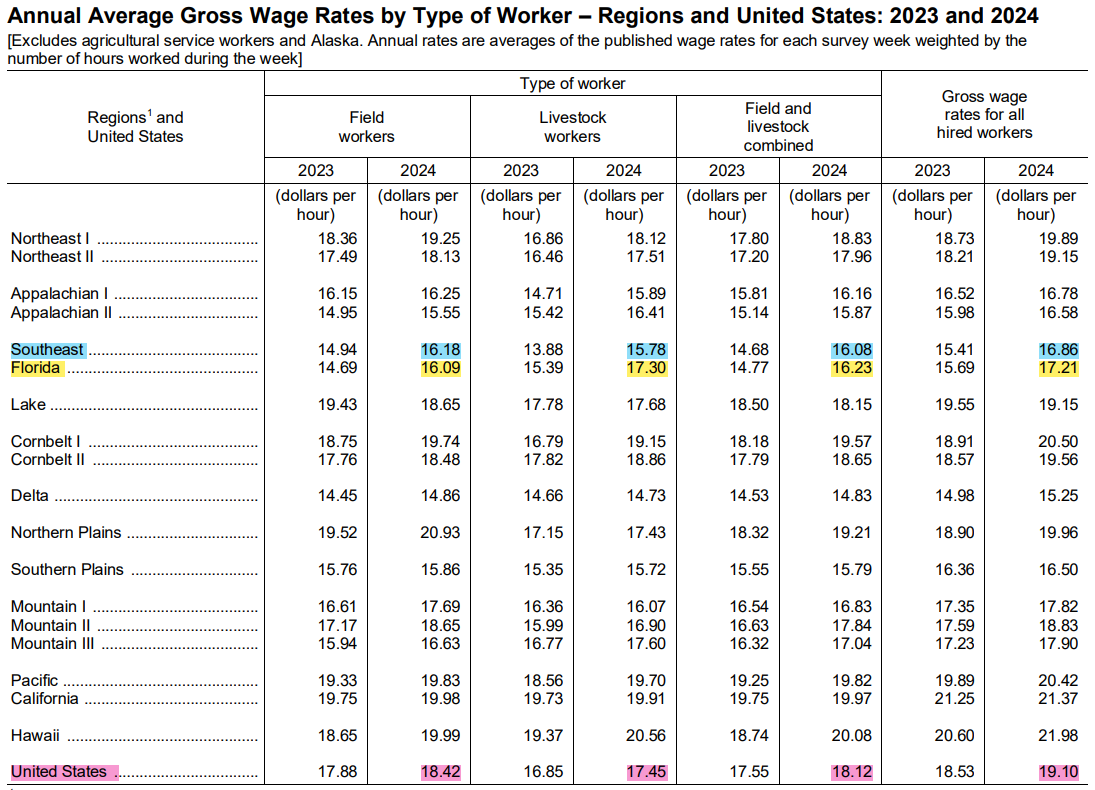
Source: USDA Farm Labor Report
–
The data shared from the NASS reports are only helpful as a guide as to where to begin negotiations. There a lot of factors to consider that affect the value of a property to rent. The biggest factors are the convenience to other acres farmed, size, and quality of the farmland. Workers too have significant value differences. The best advice I can offer is that if you are happy with your current working relationships, don’t let a few dollars either way change that. Starting over on new leases or training new workers may provide some headaches that can be much more painful than a modest cost increase.
–
Reference Sites
Look up a wide range of farm statistics for your state or county from annual NASS surveys and the 5-year Census of Agriculture through USDA NASS Quick Stats
November 2024 USDA Farm Labor Report
Tennessee Extension – Introduction to Farmland Leasing
- Northwest Florida Beef Cattle Conference & Trade Show – February 11 - December 19, 2025
- Friday Feature:The Sears Catalog –How Rural America Shopped before the Internet - December 19, 2025
- November 2025 Weather Summary & Winter Outlook - December 5, 2025

